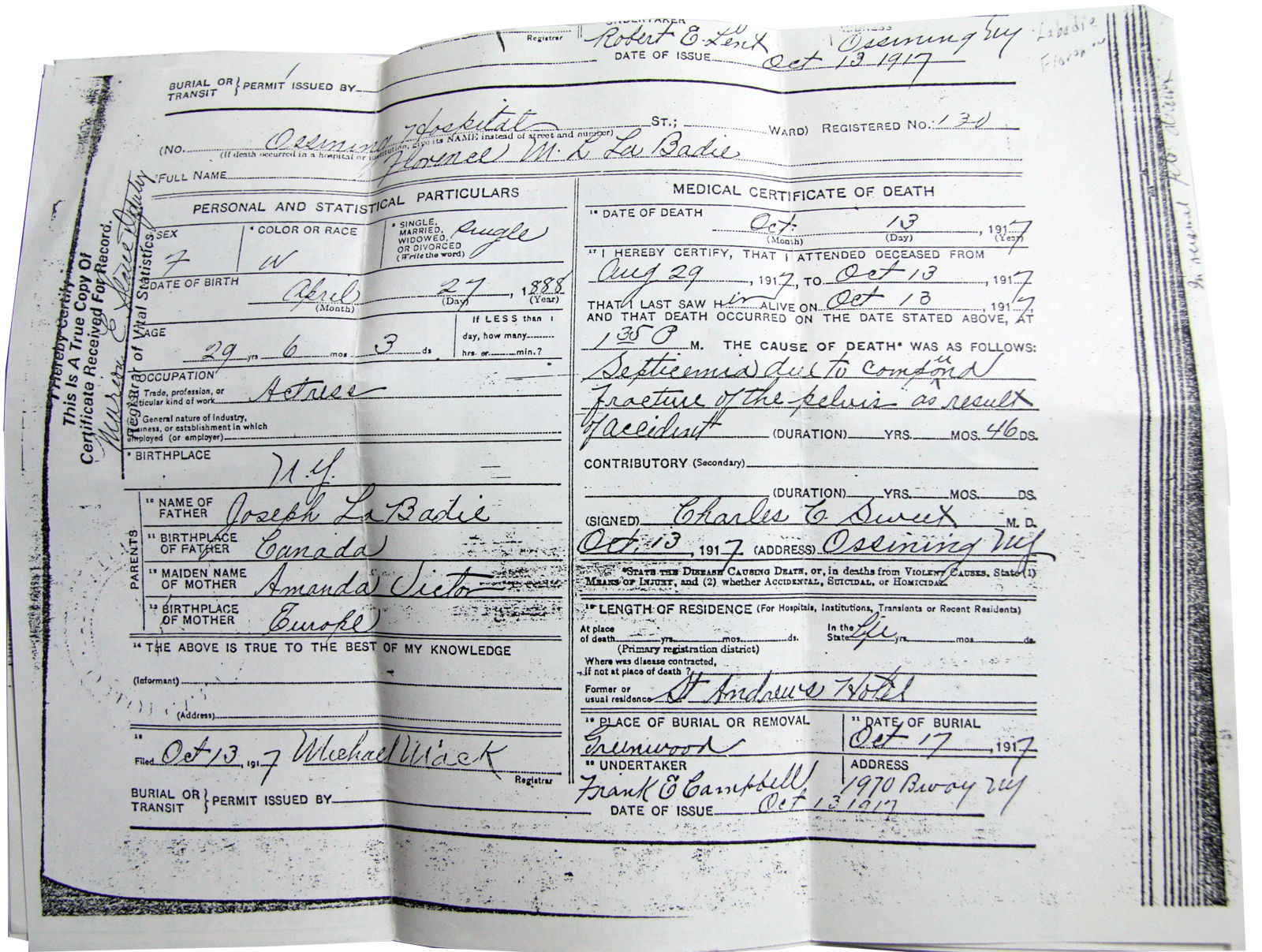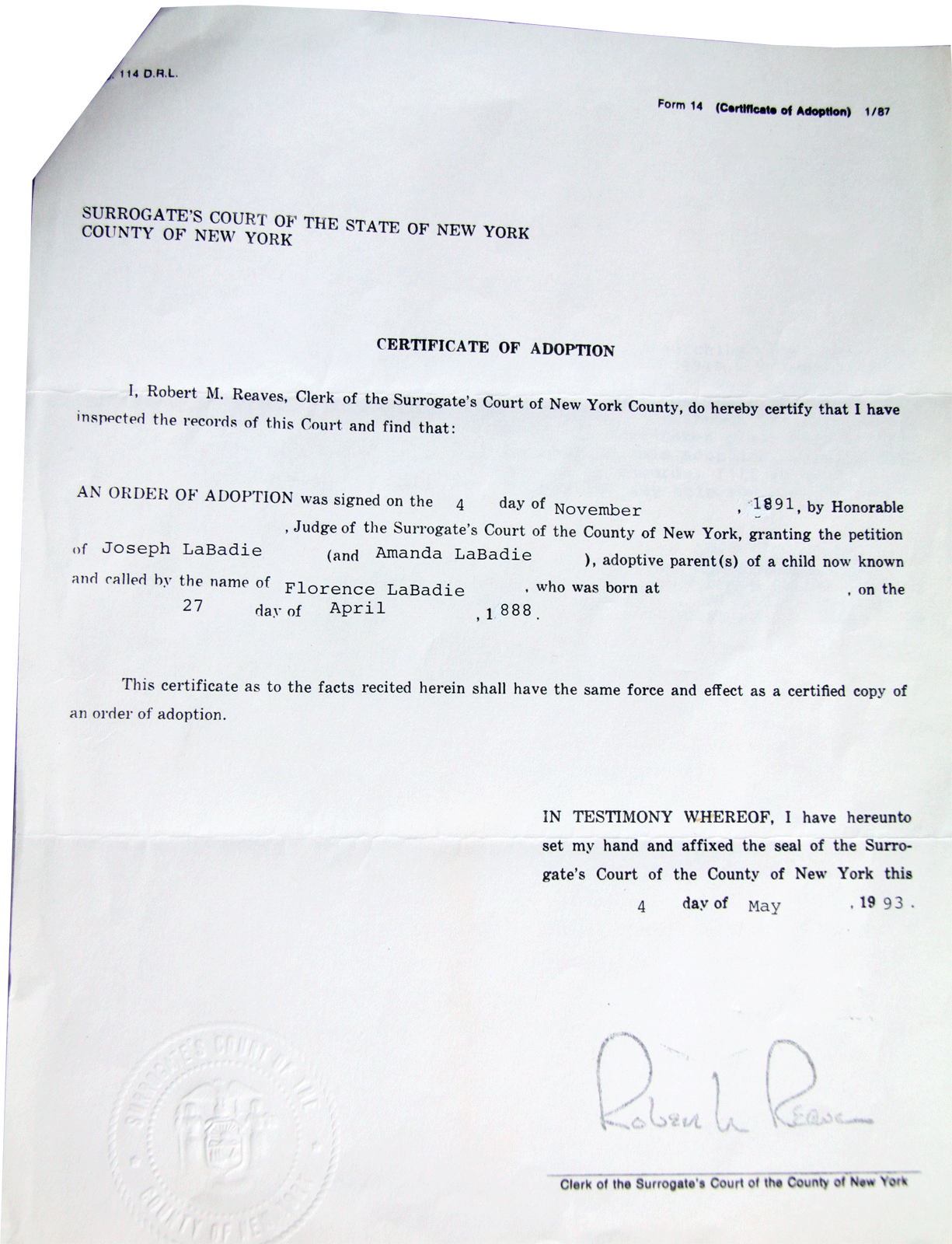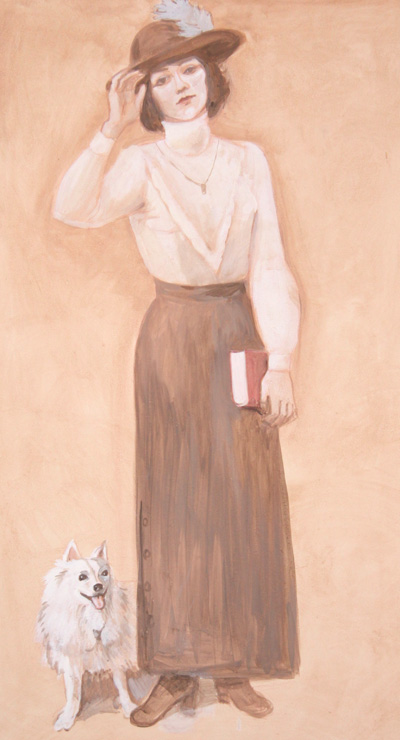|
Ever
since I read Edward Wagenknecht's heartfelt tribute to Florence LaBadie
in his "Movies In The Age Of Innocence" almost 40 years ago, I've been
intrigued by the brief but significant career of this lovely
silent-film pioneer who died tragically young. Thanks
primarily to the restoration activities of Ned Thanhouser and the
Thanhouser Company, we can enjoy many more of her films than would have
seemed possible a few decades ago. Florence now has new
admirers whose tributes can be found on the internet.
Unfortunately, these tributes are often accompanied by biographical
sketches that perpetuate sensational claims regarding Florence's life
and death, claims that originate in Charles Foster's "Stardust And
Shadows", a collection of biographical essays on Canadians in silent
film published in 2000.
In the 18 pages devoted to Florence, Foster makes a number of erroneous
statements about simple matters of fact. For example, the
name of Florence's mother was Amanda, not Helene. Her father
did not die in 1907 before she and her mother moved to New York --
Joseph LaBadie was alive and active in Florence's career when she
became a Thanhouser star. Florence was born in 1888, not
1893, and she joined the Chauncey Olcott stage production of "Ragged
Robin" in 1908 at the age of 20, not as an eight-year old
prodigy. In addition, Foster utilizes extensive quotes to
buttress some of his more extravagant claims about Florence and the
LaBadie family without giving specific sources for their origin:Much as
I appreciate Florence's film performances, I'm skeptical that
D. W. Griffith called her the
most talented actress he ever worked with!
But far more significant and controversial is the central theme of
Foster's account:that Florence LaBadie was stalked, harrassed and
impregnated by President Woodrow Wilson, then murdered, by implication,
on his orders!The main source for these astounding accusations was a
silent-film actress named Valentine Grant, who allegedly revealed the
scandalous details to Foster when he visited Hollywood in
1943. According to the author, Miss Grant (also
Mrs. Olcott, as she was married to director Sidney
Olcott) was a close friend of Florence's, thus privy to her
heart-rending tales of persecution by Wilson during the years from 1912
to 1917.
However, Valentine Grant was not a Thanhouser actress, nor is there any
evidence that she was involved in film production before 1914; also,
during that year and 1915, she was on location with her husband for
long periods in Jacksonville, Florida and Ireland. Under the
circumstances, it doesn't seem likely that she and Florence would have
had the opportunity for many confessional conversations; wouldn't it be
more reasonable that Florence would have turned to female colleagues at
Thanhouser such as Jean Darnell, Marguerite Snow, Mignon Anderson or
Muriel Ostriche? If they had knowledge of such disturbing events, would
they all have remained silent in the face of Florence's persecution? And
would all of them, and likely many of her other colleagues, have
maintained their silence about such dramatic incidents in the decades
that followed, long after both Florence and Wilson were dead?
Leaving aside the issue of Valentine Grant's credibility, there are several major problems with Foster's shocking revelations:
|

Florence LaBadie as the Madonna, in Star of Bethlehem
Portion from a Florence LaBadie mural
Artist: Katya Kompaneyets
|




